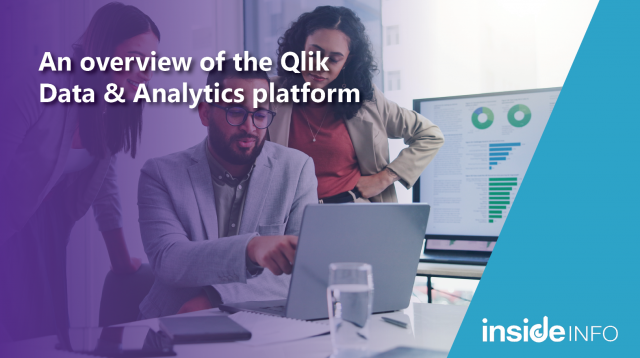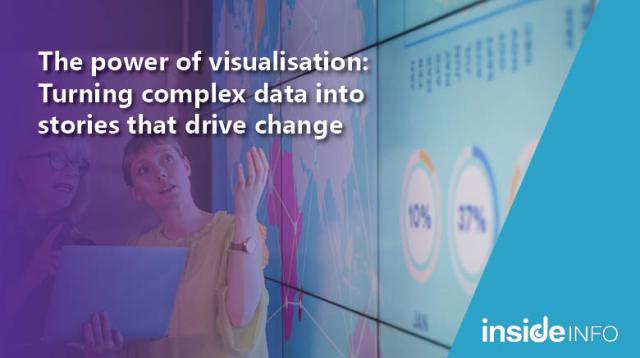10 Trends for BI - Discover The Future of Data

Last year, we moved beyond the “big data” buzz and actually started to do something with it, as more and more data moved into the hands of users who don’t have a traditional background in business intelligence (BI). Rather than relying on the experts, they sought out self-service business intelligence (BI) solutions, so they could make their own discoveries and drive data-driven business decisions.
However, with the sheer amount of data constantly streaming in, it’s been hard for businesses to keep up with all the prep and analysis required to transform raw data into real insights. Qlik has identified 10 trends in their new ebook that will drive better data literacy moving forward.
1. Combining and associating data from disparate sources will lead to better insights.
Creating a single source of truth is critical but often difficult to do when trying to consolidate disparate data sources from across a dispersed business. Business intelligence software solutions are investing in providing better capabilities for enhanced data integration. Combining both internal and external data sources into one single governed reference point.
In fact, 60% of the data that organisations consider mission critical will be external by 2020.
2. Data Visualizations will extend beyond analysis to the full information supply chain.
In the past, data visualizations were generally used only to aid in the analysis of data. But moving forward, visualizations will be regularly used to add insight throughout the entire process of reading, working with, analysing, and making arguments with data. With more people (including non-experts) getting a better view of their data, particularly in areas that previously had little or no visibility, it will be that much easier to trust, understand and derive answers from that information – footholds on the path to greater data literacy.
3. The adoption of cloud BI will reach its tipping point.
Cloud analytics is becoming the norm. According to Gartner in its 2017 Magic Quadrant for Business Intelligence and Analytics Platforms, 50% of companies will use some form of cloud-based BI in 2017. Cloud analytics will make it easier for businesses to access enterprise-grade analytics from anywhere at a better TCO.
4. New BI smart features will augment intelligence, letting people focus on their strengths.
Self-service analytics is becoming more sophisticated, incorporating advanced statistical models so that everyone can find insights, not just the data scientists who created the models. And, with the addition of machine learning, the non-data-experts can now speed time to insight even more. Features like automated data prep, smart pattern recognition, and auto-generated charts help take some of the burden off teams, so they can uncover answers faster and easier.
But these smart features are about augmented intelligence, not artificial intelligence. People – with their unique ability to think strategically, ask questions, and make non-linear connections – are still at the heart of the process; this technology simply allows us to focus on the sort of creative thinking and problem-solving we’re best at. Together, these new models and smart features will make the path to data literacy that much smoother.
5. Blending the digital & physical will open new worlds of data.
The growth of the Internet of Things (IoT), virtual reality, geospatial, and other connected device technologies means that huge new streams of data will soon be upon us. This data has the unique ability to help businesses better understand how these devices are used, and how they – and their users – interact with the physical world. But data analysts will both need to figure out what to do with the influx of new data coming from these emerging technologies. Pest control experts Rentokil, is an example of a business that has thought this through. Rentokil use their connected devices and Qlik to analyse data from more than 20,000 devices to deliver higher levels of proactive risk management against the threat of pest infestation for their clients.
In addition, more consumers will soon be exposed to analytics – products like the Fitbit fitness tracker now offer web portals that provide users unprecedented access to their personal data, allowing them to first dip their toes into the world of data literacy.
6. Freemium BI will allow more people to explore data
As competition in the analytics industry heats up, more vendors will be offering low-cost or “freemium” self-service BI solutions as a way to bring potential customers onto their platforms.
7. Modern BI platforms will deliver self-service flexibility AND scalability not either/or.
In the past, companies that wanted analytics had a choice to make: They could either have a flexible solution, where users throughout the organisation could use data in any way that fit their needs; or they could have a scalable solution that was secured and controlled enough even for large enterprises to trust their data. But now, with powerful modern BI platforms that combine self-service analytics with secure data governance, the tradeoff between flexibility and scalability will no longer be an issue.
8. Embedded analytics will make data part of people’s everyday lives.
As data proliferates, organisations are eager to monetise and modernise their data assets by injecting outward-facing applications with reports, dashboards and self-service analytics. This type of embedded analytics can increase customer satisfaction and open up revenue streams, but in the not too distant future, will be a requirement for doing business. Read our previous article on understanding embedded analytics.
9. No data analyst is an island - look to collaborative BI.
Businesses will need to invest in BI software solutions that create environments for their employees and external users to connect on their data, share learnings and insights. Making data accessible across the entire organisation also contributes to success, being a factor in 64 per cent of the high performing businesses surveyed by McKinsey recently. To achieve this level of collaboration, a platform for data analysis needs to be intuitive and easily accessed. In fact, Dresner's Collective Insights 2016 report found that 65 per cent of respondents see collaborative BI as a critical or very important priority for their businesses. This level of focus is yielding clear results for enterprises that embrace it.
10. The future of BI is in providing more relevant data, to more people.
By democratising analytics, and better connecting people, data, and ideas, we’ll move that much closer to a culture that is more enlightened, more information-driven, and more fact- based. Qlik business intelligence has led in this regard, named a Leader in BI by Gartner for the last 7 years in its BI Magic Quadrant Reports. Qlik is an enterprise-grade platform designed for businesses of all sizes, is backed by a unique associative model, which allows teams to freely explore connections across all of their data at the speed of thought. Users (including non-data scientists) can delve into massive amounts of data, from multiple sources, quickly and easily probing possible relationships as they follow their own path to insight. And with self-service capabilities and unmatched governance, IT teams can finally give users the insights they need – without hassles or limitations. That’s why we’ve chosen to design and deliver Qlik business analytics solutions since 2003.
To read more, download the ebook: 10 Trends for BI: Discover The Future of Data.






